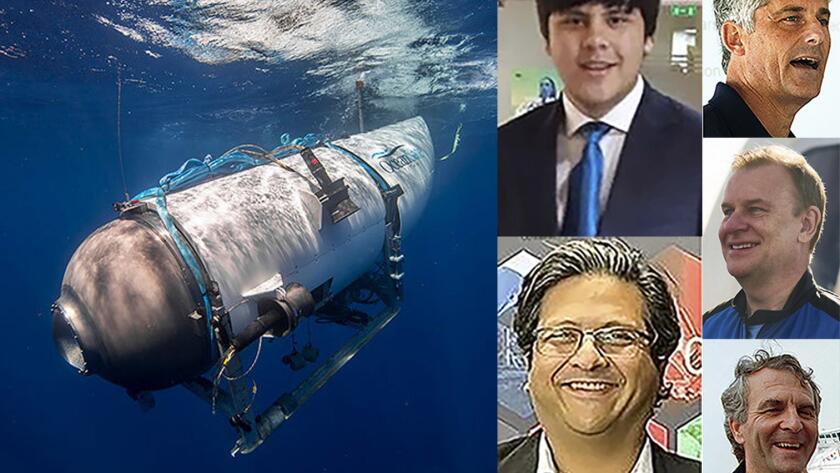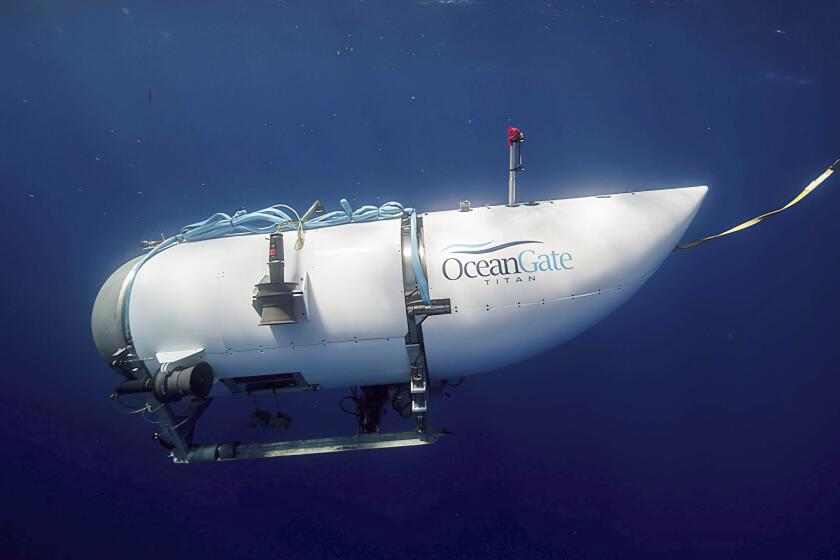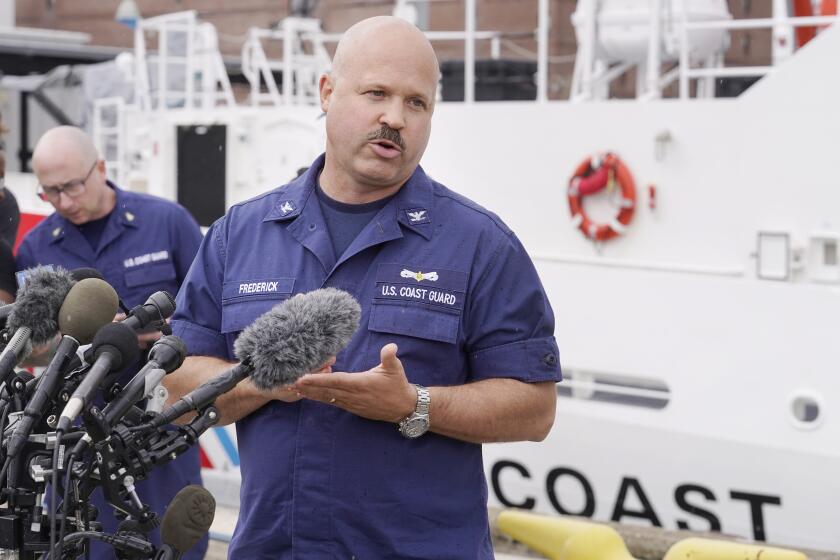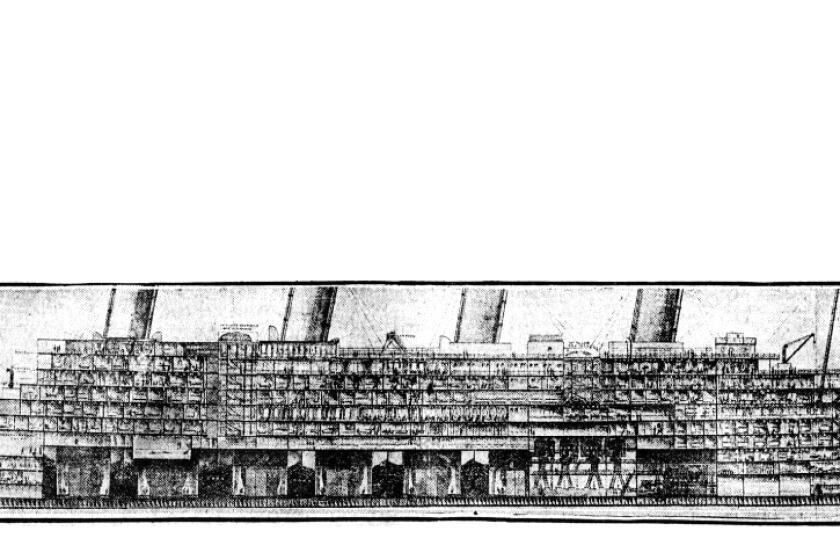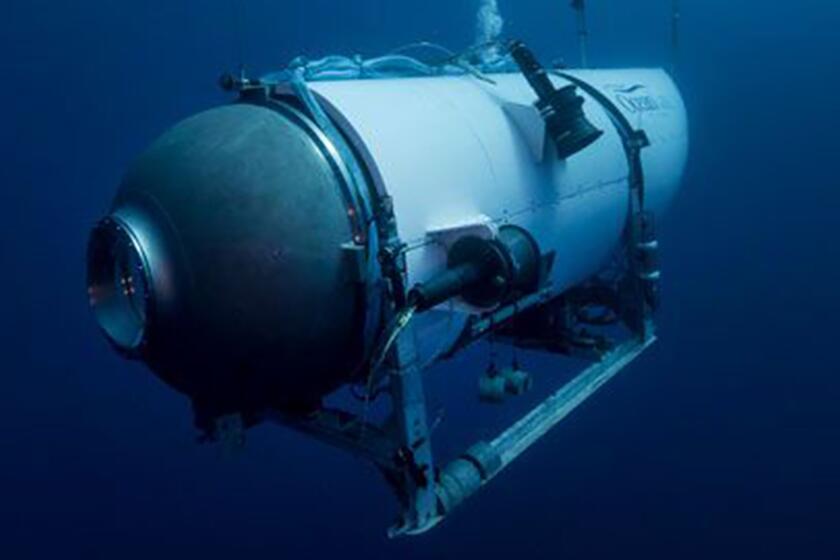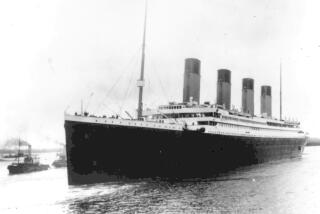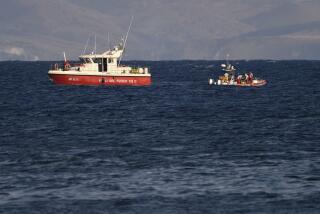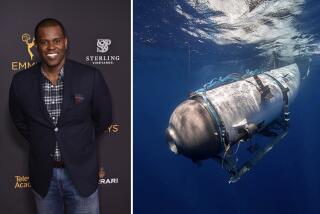5 aboard Titanic tourist sub are dead after ‘catastrophic implosion’
- Share via
The five passengers on a sub that vanished on a trip to explore the Titanic wreckage have died after a catastrophic implosion, U.S. Coast Guard says.
- Share via
NEW YORK — All five passengers aboard a submersible that vanished while on a dive to explore the Titanic wreck site have died, officials said Thursday after underwater robots discovered seafloor debris from the sub that was “consistent with a catastrophic implosion.”
A robot from the Canadian vessel Horizon Arctic discovered several major pieces of the 21-foot sub, the Titan, in a debris field about 1,600 feet from the bow of the Titanic, U.S. Coast Guard Rear Adm. John W. Mauger said at a news conference.
“The debris is consistent with the catastrophic loss of the pressure chamber,” Mauger said.
The families of the passengers have been notified, he said.
“On behalf of the U.S. Coast Guard and the entire unified command, I offer my deepest condolences to the families,” he said. “I can only imagine what this has been like for them. I hope that this discovery provides some solace during this difficult time.”
The five passengers were Stockton Rush, the pilot of the exploration and chief executive of OceanGate Expeditions, which owns and operates the sub; Hamish Harding, chairman of Action Aviation, a Dubai-based aircraft dealer; Paul-Henry Nargeolet, a veteran and accomplished diver with more than 30 trips to the wreck site; and Pakistani businessman Shahzada Dawood and son Suleman.

OceanGate said in a statement that its “hearts are with these five souls and every member of their families during this tragic time.”
“These men were true explorers who shared a distinct spirit of adventure and a deep passion for exploring and protecting the world’s ocean,” the company said. “We grieve the loss of life and joy they brought to everyone they knew.”
Long before a submersible vanished on an expedition to explore the wreck of the Titanic, concerns were raised about the safety of the vessel.
The sub was reported missing after it lost contact with the Canadian research vessel Polar Prince about 1 hour and 45 minutes into its dive Sunday about 900 miles east of Cape Cod, Mass., the Coast Guard said.
Its disappearance set off an international search-and-rescue effort, as crews raced around the clock using specialized equipment to find the sub, which was designed to have an initial air supply of 96 hours. Officials also said it had only “limited rations” of food and water.
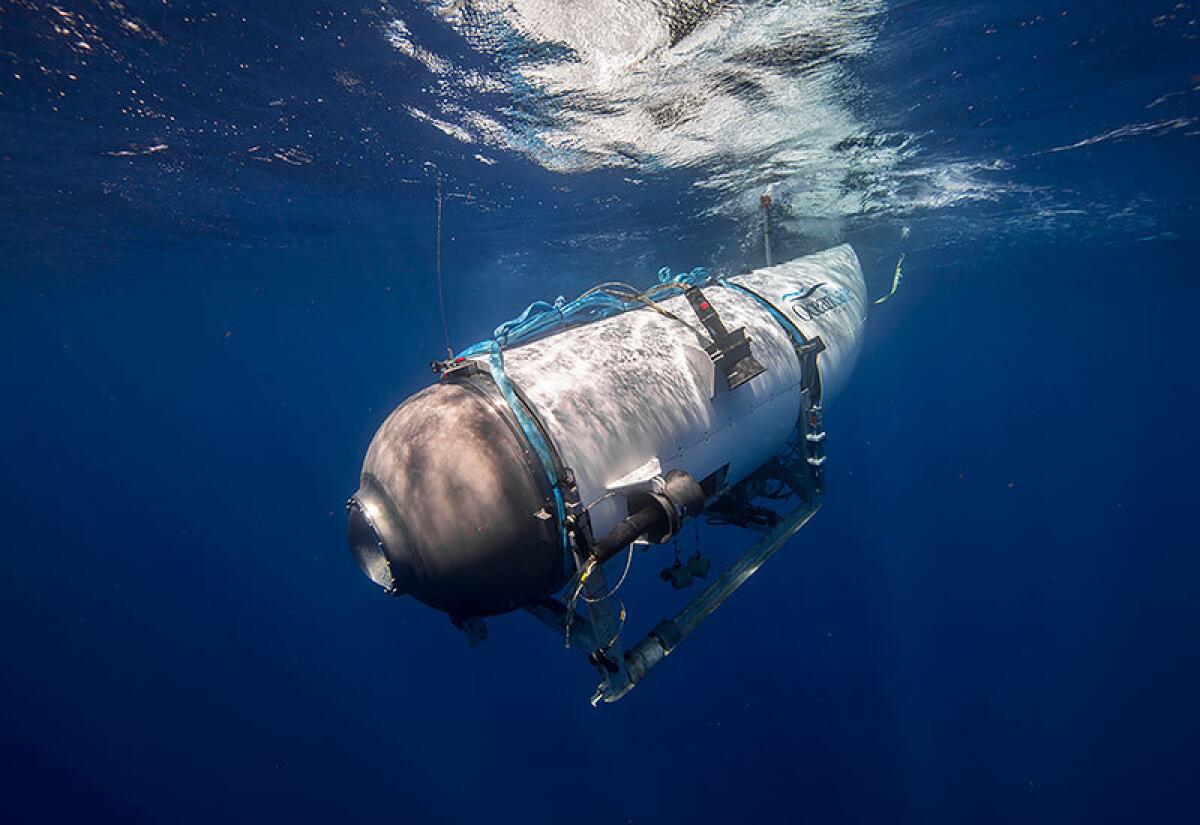
The search grew to 10,000 square miles, roughly the size of Massachusetts, and went 2½ miles deep. Through the days-long effort, officials maintained optimism that the operation would remain a search-and-rescue effort and not a recovery mission.
Assets launched in the search included American and Canadian aerial support vessels that scanned the ocean’s surface and subsurface using sonobuoys; U.S. Navy divers; coast guard and research vessels from Canada, France and Norway, some of which were equipped with highly specialized remote-operated vehicles that could work on the ocean’s floor; and assistance from commercial vessels.
A moment of promise came Tuesday when the Coast Guard confirmed reports that banging noises were detected on the seafloor by sonobuoys dropped from Canadian aircraft. Although officials said the origins of the sounds were unclear, they became the target of search efforts.
The use of remotely operated vehicles in the search for the Titanic tourist submersible carrying five people has yielded no results, the U.S. Coast Guard said.
At the news conference Thursday, Mauger said the underwater noises, which were also observed Wednesday, did not appear to be connected to the sub’s location. The implosion would generate “significant broadband sound” that would have been picked up by the sonobuoys, he said.
Paul Hankins, a salvage expert for the U.S. Navy, said five major pieces of debris from the Titan were found, including the nose cone, which was outside of the pressure hull. Crews also found a large debris field that contained the front-end bell of the pressure hull.
“That was the first indication there was a catastrophic event,” he said. A second, smaller debris field contained the other end of the pressure hull and other wreckage that compromised the totality of the vessel.
Officials said that the debris was in an area away from the Titanic wreckage in a patch of smooth ocean floor and that there were no signs the vessel collided with the historic ship. The size of the debris field and the vessel’s last-known location are consistent with an “implosion in the water column,” officials said.
Mauger said it is too early to tell when the vessel imploded, and added that listening equipment used throughout the search did not detect any type of catastrophic event.
However, a U.S. government official familiar with the incident but not authorized to speak to the media told The Times that technology designed to listen to the ocean for movement captured the sound of the submersible imploding around the time communications were lost. The news was first reported by the Wall Street Journal, which noted the sound “anomaly.”
When asked whether the victims’ remains might be recovered, Mauger said he did not have an answer, reiterating the implosion and underlining the ocean’s harsh conditions. “This is an incredibly unforgiving environment down there on the seafloor,” he said.
Like the search-and-rescue efforts, the investigation into what happened will be complex, Mauger said, because of the remote location where the event occurred and because it involves the government agencies of several countries whose citizens were aboard.
The composite material used to build the sub and a lack of safety systems will be the focus of a maritime inquiry, which most likely will involve Canadian and U.S. investigators, according to sources familiar with such operations.
Nine vessels were at the location Thursday, and demobilization efforts are expected to take place over the next 24 hours. But remote-operated vehicles will continue to map the ocean floor, Mauger said, and officials are working to develop a timeline of the implosion.
“I know that there’s also a lot of questions about how, why and when did this happen,” Mauger said. “Those are questions that we will collect as much information as we can on now.”
The exploitative coverage of the death and terror unfolding in real time as the search for the Titan sub continued was compounded by the public’s reaction on TikTok and Twitter.
OceanGate has been running expeditions with “citizen explorers” to the Titanic since 2021 on its Titan sub, according to its website. But as the search unfolded, new details emerged that submersible industry leaders, oceanographers and former employees had long sent warning signs about the Titan.
The Manned Underwater Vehicles Committee at the Marine Technology Society, which advocates for marine technology and resources, wrote a private letter to Rush in 2018 calling on him to allow for a third-party safety review of the Titan. The letter said the marketing for the Titan was, “at minimum, misleading to the public and breaches an industry-wide professional code of conduct we all endeavor to uphold.”
“Our apprehension is that the current experimental approach adopted by OceanGate could result in negative outcomes (from minor to catastrophic) that would have serious consequences for everyone in the industry,” the letter stated.
That same year, David Lochridge, a former OceanGate employee, raised red flags about the Titan in litigation against the company, “particularly OceanGate’s refusal to conduct critical, non-destructive testing of the experimental design of the hull.”
Lochridge, a submersible pilot hired to do quality and safety inspections, said he was terminated for coming forward. He said he disagreed with Rush’s decision to “subject passengers to potential extreme danger in an experimental submersible.” In court papers, OceanGate denied Lochridge’s claims, and the case was later settled.
Rush had criticized what he considered red tape. “One of the jabs that gets thrown at us is: ‘Hey, you aren’t certified.’ But how can you do something new and get certified?” Rush asked in a 2022 article in Maptia. “If the rules exist for how to do it, then you are operating outside of the rules by doing something different.”
Referring to Gen. Douglas MacArthur, he added: “I think it was MacArthur who said, ‘You are remembered for the rules you break.’ We try to break the rules intelligently and intentionally.”
Times staff writers Richard Winton and Noah Goldberg in Los Angeles contributed to this report.
More to Read
Sign up for Essential California
The most important California stories and recommendations in your inbox every morning.
You may occasionally receive promotional content from the Los Angeles Times.
